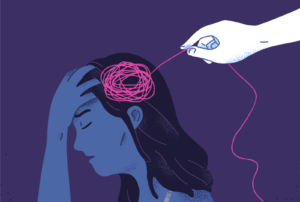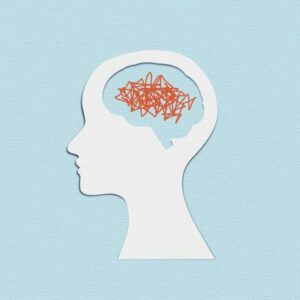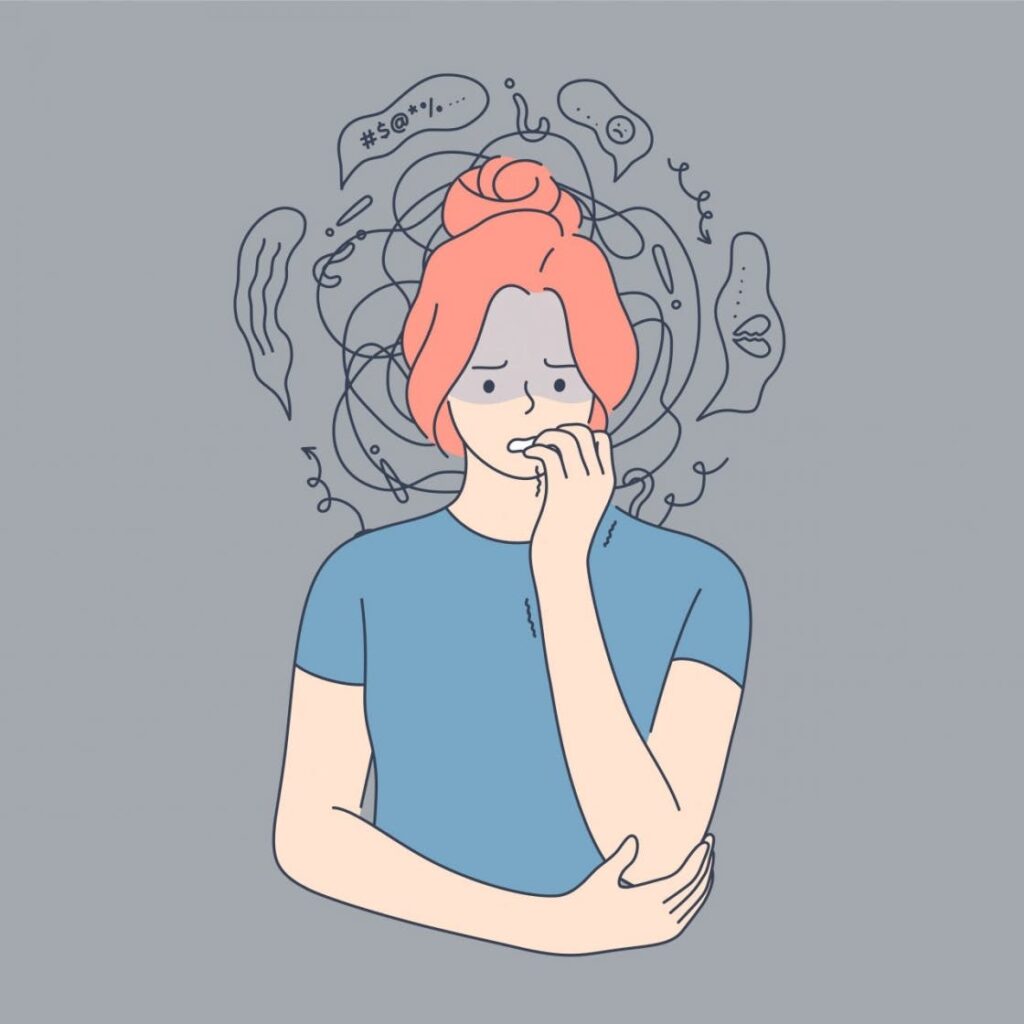Do you sometimes feel like you’re having a heart attack? It might not be your heart that’s the problem – it could be a panic attack. Panic attacks are very common and can affect anyone at any time. In this blog post, we will discuss the signs and symptoms of a panic attack so that you can identify them if they happen to you. Knowing what to look out for is the first step to getting help!
Defining Panic Attacks

Panic attacks are a type of anxiety attack that can come on suddenly and without warning. They are often accompanied by physical symptoms such as a racing heart, shortness of breath, sweating, and dizziness. Panic attacks can last for a few minutes or longer, and they can be so intense that you might feel like you’re going to faint or have a heart attack.
Panic attacks are usually triggered by something that makes you feel anxious or stressed – such as a work deadline or public speaking engagement. However, they can also happen for no apparent reason. If you’ve ever had a panic attack, you’ll know how frightening and debilitating they can be.
Signs Of Panic Attacks
There are a few key signs and symptoms that you can look out for if you think you might be having a panic attack. These include:
A racing heart
You might feel like your heart is pounding or racing. This is usually accompanied by a feeling of chest tightness. This reaction is your body’s way of preparing you to fight or flight. It happens because your body is pumping more blood to your muscles so that you can run away or fight if necessary.
Shortness of breath
You might feel like you can’t catch your breath, even if you’re not exerting yourself physically. This is because your body is releasing adrenaline, which causes your heart to pump faster and constricts your blood vessels. This is caused by the same physical response – your body is preparing itself for fight or flight and is sending more oxygen to your muscles.
Sweating
You might start to sweat more than usual, even if you’re not in a hot environment or exercising. This is another physical response to the adrenaline released during a panic attack. It is again triggered by your body’s fight or flight response.
Dizziness
You might feel lightheaded or dizzy, as though you’re going to faint. This happens due to the drop in blood pressure that occurs when you’re having a panic attack. It can also be caused by hyperventilation (breathing too fast).
Shaking
You might feel like your whole body is shaking, or just your hands and legs. This is another response to the adrenaline released during a panic attack. It also happens when your body is trying to conserve heat.
Chest pains
You might feel like you’re having a heart attack because you’re experiencing chest pain. This is usually due to the tightening of your chest muscles, which can happen when you’re feeling anxious or stressed. This can also manifest as a pain in your jaw or neck.
Crying

You might find yourself crying for no apparent reason. This can be a reaction to the stress and anxiety of a panic attack. It can also be a way of releasing the built-up tension in your body. This happens because crying releases endorphins, which have a calming effect.
Tingling or numbing sensations
You might feel like your hands and feet are tingling or going numb. This happens because your body is redirecting blood to your vital organs, away from your extremities. This also happens by the constriction of blood vessels, which can happen during a panic attack.
Feeling of detachment
You might feel like you’re detached from yourself or that you’re watching yourself from outside your body. This feeling is called depersonalization, and it’s a defense mechanism that our bodies use when we’re under stress.
Hot flashes or chills
You might suddenly feel hot or cold, even if the environment around you hasn’t changed temperature. This is another physiological response to stress as your body tries to regulate its temperature. Adrenaline can also cause your body to sweat, which can make you feel cold.
Fear of losing control
You might feel like you’re going crazy or that you’re about to lose control of yourself. This is a common fear during a panic attack, but it’s important to remember that it’s just a feeling – it’s not actually happening.
Fear of dying
One of the most common – and most frightening – symptoms of a panic attack is the feeling that you’re going to die. You might feel like you’re going to die or that you’re having a heart attack. This is because your body is preparing itself for a life-threatening situation. However, it’s important to remember that panic attacks are not dangerous and they will not kill you.
Fatigue
You might feel exhausted after a panic attack. This is because your body has been working hard to fight or flight. It’s also common to feel tired in the days leading up to a panic attack, as stress and anxiety can take a toll on your energy levels. It also might be hard to sleep, which can add to fatigue.
These are a few tell-all signs of a panic attack. It is important to remember that different people may have different signs with variations in the intensity as well as the severity of the symptoms.
Although panic attacks cannot physically hurt you, but the experience can be very frightening. If you think you might be having a panic attack, it’s important to seek help from a mental health professional. They can help you understand what’s happening and provide tools to manage your symptoms.
Managing Panic Attacks

Now that we have understood the signs of a panic attack, it is now essential to learn some ways and strategies to manage them. This can happen either through the intervention by a mental health professional or adopting self help strategies.
Medication
If you’re struggling to manage your panic attacks, medication might be an option. There are several types of medications that can be used to treat anxiety, including selective serotonin reuptake inhibitors (SSRIs), benzodiazepines, and beta-blockers. Anxiety medication help by reducing the symptoms of anxiety, making it easier to manage. It works by changing the way your brain chemistry works, which can have a calming effect.
It’s important to talk to your doctor about the risks and benefits of each medication to find the one that’s right for you. They will also monitor the risks, side effects and benefits of medication before starting any new prescription.
Therapy
There are multiple types of therapies that help in managing the signs of a panic attack.
Cognitive Behavioral Therapy (CBT): CBT is a type of therapy that focuses on changing the negative thoughts and beliefs that contribute to anxiety. CBT can be done in individual or group sessions, and it has been shown to be an effective treatment for anxiety disorders.
Exposure Therapy: Exposure therapy is a type of CBT that involves slowly exposing yourself to the things that trigger your anxiety. This can be done in a safe and controlled environment, such as with a therapist. Exposure therapy can help you learn to manage your anxiety by teaching you how to control your fear response.
Cognitive Behavior Modification: This therapy focuses on changing the way you think about and respond to your anxiety triggers. CBM can help you learn to control your fear response and manage your anxiety.
Rational Emotive Behavior Therapy (REBT): This therapy focuses on changing the negative thoughts and beliefs that contribute to anxiety. REBT can help you learn to control your fear response and manage your anxiety.
Acceptance and Commitment Therapy (ACT): This therapy focuses on accepting your anxiety triggers and learning to live with them. ACT can help you learn to control your fear response and manage your anxiety.
Panic-Focused Psychodynamic Therapy (PFPP): This therapy focuses on the role of your past experiences in contributing to your anxiety. PFPP can help you understand how your past experiences are affecting your present, and how to manage your anxiety.
Group Therapy: Group therapy can be a helpful way to share your experiences with others who are going through similar things. Group therapy can also provide support and accountability as you work to manage your anxiety.
All of these therapies can be effective in treating panic attacks, but it’s important to find the one that’s right for you. You might need to try a few different types of therapy before you find the one that works best for you.
Self Help Strategies
There are also self-help strategies that can be effective in managing panic attacks. Some of these include:
- Identify your triggers. What situations or events tend to trigger a panic attack? Once you know your triggers, you can avoid them or be prepared for them.
- Try to stay calm and breathe slowly and deeply. This will help to prevent hyperventilation, which can make your symptoms worse.
- Focus on something else. Distract yourself by focusing on an object in the room or reciting a mantra or positive affirmation.
- Listen to music, relaxation techniques, or guided imagery. There are many apps and websites that offer these types of resources.
- Practice progressive muscle relaxation. This involves tensing and relaxing different muscle groups in your body. It can help to reduce the overall tension in your body.
- Exercise regularly. This can help to reduce stress and anxiety levels, which can trigger panic attacks.
- Keep a panic relief tool handy. This could be a small object that you can hold or touch or a piece of jewelry that you can wear. When you feel a panic attack coming on, use the tool to help ground and calm yourself.
- Talk to someone who understands. Sometimes it can be helpful to talk to someone who knows what you’re going through. They can offer support and understanding.
Panic attacks can be scary, but there are ways to manage them. If you’re struggling with panic attacks, talk to your doctor or a mental health professional about treatment options. With the right help, you can manage your panic attacks and live a healthy and happy life.
Conclusion
In conclusion, panic attacks can be a very scary experience. It is important to understand the signs of a panic attack and what you can do to manage them. If you are struggling with panic attacks, talk to your doctor or a mental health professional about treatment options. With the right help, you can manage your panic attacks and live a healthy and happy life.
For more information, please contact MantraCare. Anxiety is a common mental health condition characterized by persistent feelings of worry, fear, and apprehension. If you have any queries regarding Online Anxiety Counseling experienced therapists at MantraCare can help: Book a trial Anxiety therapy session


